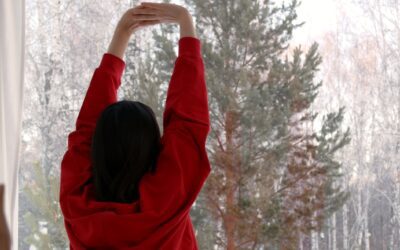Interventional orthopedic and orthobiologic medicine encompasses the treatment methods used to regrow, repair, or replace damaged or diseased cells, tissues, and organs, with the goal of restoring them to normal function (or as close as possible). It includes innovative treatments that use a person’s own healthy cells or tissues to encourage healing in other parts of the body that have deteriorated due to age, overuse, or injury.
How it Works
The human body has the natural, and remarkable, ability to heal itself in many ways. Take, for example, how a cut on your skin will eventually repair itself by scabbing over the open wound. The foundation behind interventional orthopedic and orthobiologic medicine is to capture this natural ability to heal and apply it to a far broader range of conditions and treatments.
In this type of medicine, cells are considered building blocks. And when one block is damaged, the premise is to fix or replace it with another. Cell-based therapies called orthobiologics are used with tissues from a patient’s own body or from the body of a donor. These healthy cells and tissues essentially direct the other cells to restore the structure and function of the existing tissue.
Primarily, treatments are offered for patients seeking relief from common orthopedic conditions, such as osteoarthritis in the knees and other joints. With interventional orthopedic and orthobiologic therapies, we focus on developing and applying these treatments to heal tissues and organs, restoring function lost due to a number of circumstances.
Compared to Traditional Treatments
Let’s face it. People are tired of prescriptions and invasive treatments that often only focus on the control of pain and symptoms. They want to get to the root of the problem and fix it there, not merely place a band-aid on it. That’s where interventional orthopedic and orthobiologic medicine can help.
While many traditional treatments focus only on relieving pain and controlling symptoms, interventional orthopedic and orthobiologic therapies treat the underlying cause of the pain or symptom. At NW Regen we don’t merely address symptoms, rather, we use this type of medicine to treat the root cause of the problem. Our treatments can help heal joints, nerves and tissue damaged by age, disease, or trauma.
Examples of Interventional Orthopedic and Orthobiologic Medicine
While some people may not have heard the term “interventional orthopedic and orthobiologic medicine,” most have heard of the common treatments encompassed by it, including:
- Platelet Rich Plasma (PRP), advanced biocellular therapy from a patient’s own blood that regulates inflammation, stimulates repair, and promotes remodeling of damaged tissues.
- Prolotherapy, a nonsurgical regenerative joint injection therapy that stimulates the body’s healing process to permanently strengthen and repair joints.
- Adipose Derived Biocellular Therapies, powerful injection therapies that use an adipose (fatty) tissue graft from your body rich in regenerative cells including stem cells.
These are just a few of the many treatments offered. And while each treatment method varies in its approach, they all have one thing in common—they effectively seek to repair or replace tissues to restore function back to the damaged area.
The goal is to reduce pain, improve lives, and help people optimize their performance, all without invasive surgeries or prescriptions to alleviate symptoms only. As always, the treatment depends on the patient and the issue involved.
Some History
Interventional orthopedic and orthobiologic medicine dates back to the 1990s, including a 1992 physician paper about the technologies that would influence the future of medicine and a 1999 conference about an “emerging field.” However, the treatments themselves go back much further. Interventional orthopedic and orthobiologic procedures were researched and discussed in the 1930s. And the first kidney transplant occurred in 1954. The following are a few more notable firsts, going back decades:
- 1968 First cell transplantation (bone marrow)
- 1978 Discovery of stem cells in human cord blood
- 1981 First engineered tissue transplantation: skin
While it may seem like interventional orthopedic and orthobiologic medicine is a new approach to healing, it’s not as new as many would think.
At NW Regen, we have a deep foundational understanding of interventional orthopedic and orthobiologic medicine, allowing us to modify our procedures based on the scientific advances that are continuously occurring. Our goal is to provide the best, most informed options to treat not merely the symptoms our patients are experiencing, but the root causes of the underlying problems. Having the ability to effectively perform these non-surgical treatments is a significant part of our tailored approach to healthy, whole-body healing.

Dr. Ryan Wood is a licensed Naturopathic and Chiropractic physician focusing on interventional orthopedic and orthobiologic medicine and injection therapies as well as general musculoskeletal and non-surgical orthopedic medicine.
With almost two decades of orthopedic practice across multiple disciplines, he has the necessary experience to ensure proper diagnoses and management of complex cases.


